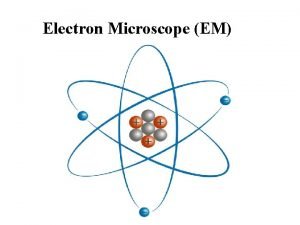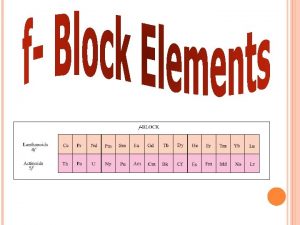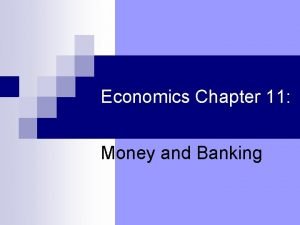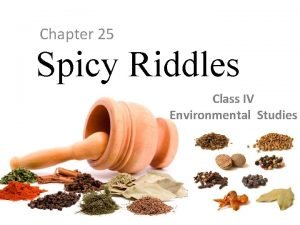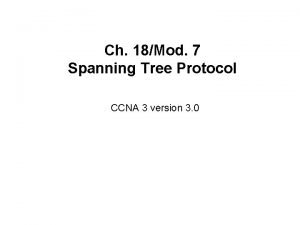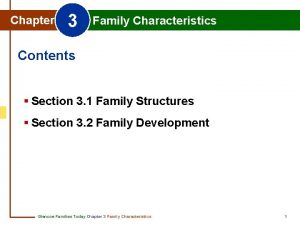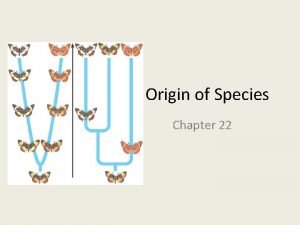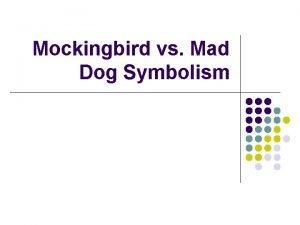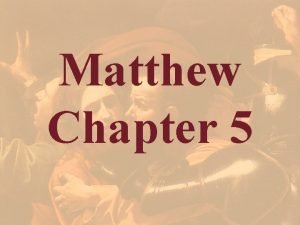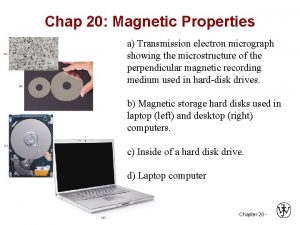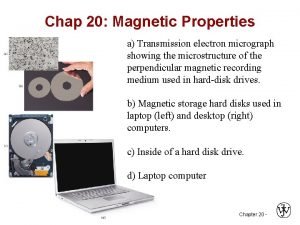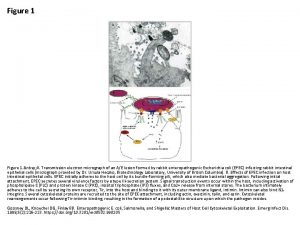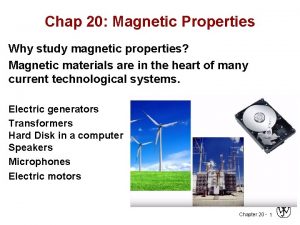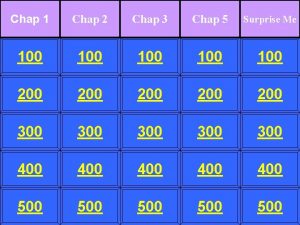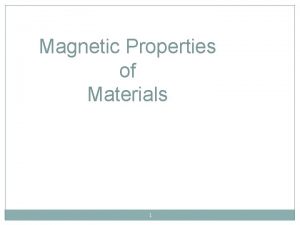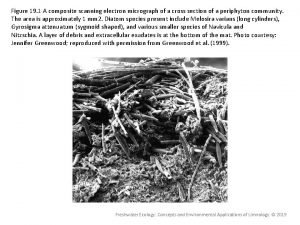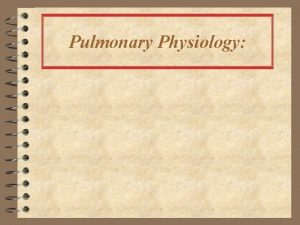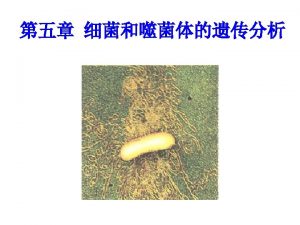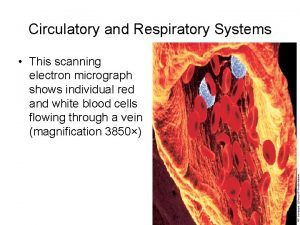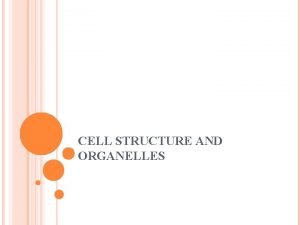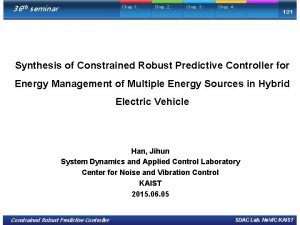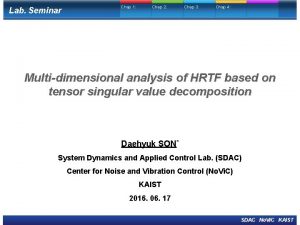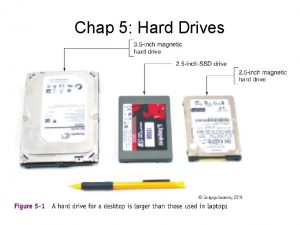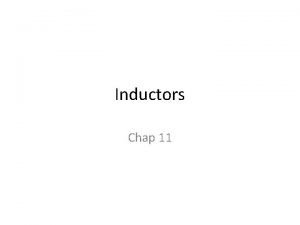Chap 20 Magnetic Properties a Transmission electron micrograph














![Magnetic Anisotropy Easy magnetization direction: Ni- [111], Fe- [100], Co- [0001]. Hard magnetization direction: Magnetic Anisotropy Easy magnetization direction: Ni- [111], Fe- [100], Co- [0001]. Hard magnetization direction:](https://slidetodoc.com/presentation_image_h2/710545c23231b45cb06d3a45c8a70e18/image-15.jpg)









- Slides: 24

Chap 20: Magnetic Properties a) Transmission electron micrograph showing the microstructure of the perpendicular magnetic recording medium used in hard-disk drives. b) Magnetic storage hard disks used in laptop (left) and desktop (right) computers. c) Inside of a hard disk drive. d) Laptop computer Chapter 20 -

Chapter 20: Magnetic Properties ISSUES TO ADDRESS. . . • What are the important magnetic properties? • How do we explain magnetic phenomena? • How are magnetic materials classified? • How does magnetic memory storage work? • What is superconductivity and how do magnetic fields effect the behavior of superconductors? Chapter 20 - 2

Generation of a Magnetic Field -Vacuum • Created by current through a coil: B I N = total number of turns �= length of each turn (m) I = current (ampere) B = magnetic field (tesla) Chapter 20 - 3

Generation of a Magnetic Field -Vacuum • Created by current through a coil: B 0 N = total number of turns �= length of each turn (m) I = current (ampere) H = applied magnetic field (ampere-turns/m) B 0 = magnetic flux density in a vacuum (tesla) H I • Computation of the applied magnetic field, H: • Computation of the magnetic flux density in a vacuum, B 0: B 0 = 0 H permeability of a vacuum (1. 257 x 10 -6 Henry/m) Chapter 20 - 4

Generation of a Magnetic Field -within a Solid Material • A magnetic field is induced in the material B applied magnetic field H B = Magnetic Induction (tesla) inside the material B = H current I permeability of a solid • Relative permeability (dimensionless) Chapter 20 - 5

Generation of a Magnetic Field -within a Solid Material (cont. ) M = m. H • Magnetization Magnetic susceptibility (dimensionless) B = 0 H + 0 M • B in terms of H and M • Combining the above two equations: B B = 0 H + 0 m. H = (1 + m) 0 H m > 0 vacuum m = 0 m < 0 H permeability of a vacuum: (1. 26 x 10 -6 Henry/m) m is a measure of a material’s magnetic response relative to a vacuum Chapter 20 -

20. 1 A coil of wire 0. 20 m long and having 200 turns carries a current of 10 A. (a) What is the magnitude of the magnetic field strength H? (b) Compute the flux density B if the coil is in a vacuum. (c) Compute the flux density inside a bar of titanium that is positioned within the coil. The susceptibility for titanium is found in Table 20. 2. (d) Compute the magnitude of the magnetization M. Chapter 20 - 7

Origins of Magnetic Moments • Magnetic moments arise from electron motions and the spins on electrons. magnetic moments electron spin nucleus electron orbital motion Adapted from Fig. 20. 4, Callister & Rethwisch 8 e. electron spin • Net atomic magnetic moment: -- sum of moments from all electrons. • Four types of response. . . Chapter 20 - 8

B (tesla) Types of Magnetism (3) ferromagnetic e. g. Fe 3 O 4, Ni. Fe 2 O 4 (4) ferrimagnetic e. g. ferrite( ), Co, Ni, Gd ( m as large as 106 !) (2) paramagnetic ( m ~ 10 -4) e. g. , Al, Cr, Mo, Na, Ti, Zr vacuum ( m = 0) (1) diamagnetic ( m ~ -10 -5) e. g. , Al 2 O 3, Cu, Au, Si, Ag, Zn H (ampere-turns/m) Plot adapted from Fig. 20. 6, Callister & Rethwisch 8 e. Values and materials from Table 20. 2 and discussion in Section 20. 4, Callister & Rethwisch 8 e. Chapter 20 - 9

Magnetic Responses for 4 Types none opposing Adapted from Fig. 20. 5(a), Callister & Rethwisch 8 e. (2) paramagnetic random aligned Adapted from Fig. 20. 5(b), Callister & Rethwisch 8 e. (3) ferromagnetic (4) ferrimagnetic aligned Applied Magnetic Field (H) aligned No Applied Magnetic Field (H = 0) Adapted from Fig. 20. 7, Callister & Rethwisch 8 e. (1) diamagnetic Chapter 20 - 10

Influence of Temperature on Magnetic Behavior With increasing temperature, the saturation magnetization diminishes gradually and then abruptly drops to zero at Curie Temperature, Tc. Chapter 20 - 11

Magnetic Domains Chapter 20 - 12

Domains in Ferromagnetic & Ferrimagnetic Materials • As the applied field (H) increases the magnetic domains change shape and size by movement of domain boundaries. B sat H Magnetic induction (B) H H 0 • “Domains” with aligned magnetic moment grow at expense of poorly aligned ones! Adapted from Fig. 20. 13, Callister & Rethwisch 8 e. (Fig. 20. 13 adapted from O. H. Wyatt and D. Dew. Hughes, Metals, Ceramics, and Polymers, Cambridge University Press, 1974. ) Applied Magnetic Field (H) H=0 Chapter 20 - 13

Hysteresis and Permanent Magnetization • The magnetic hysteresis phenomenon B Stage 3. Remove H, alignment remains! => permanent magnet! Stage 4. Coercivity, HC Negative H needed to demagnitize! Stage 5. Apply -H, align domains Stage 2. Apply H, align domains H Adapted from Fig. 20. 14, Callister & Rethwisch 8 e. Stage 1. Initial (unmagnetized state) Stage 6. Close the hysteresis loop Chapter 20 - 14
![Magnetic Anisotropy Easy magnetization direction Ni 111 Fe 100 Co 0001 Hard magnetization direction Magnetic Anisotropy Easy magnetization direction: Ni- [111], Fe- [100], Co- [0001]. Hard magnetization direction:](https://slidetodoc.com/presentation_image_h2/710545c23231b45cb06d3a45c8a70e18/image-15.jpg)
Magnetic Anisotropy Easy magnetization direction: Ni- [111], Fe- [100], Co- [0001]. Hard magnetization direction: Ni- [100], Fe- [111], Co- Chapter 20 - 15

Hard and Soft Magnetic Materials Soft -- large coercivities -- used for permanent magnets -- add particles/voids to inhibit domain wall motion -- example: tungsten steel -Hc = 5900 amp-turn/m) Hard B Hard magnetic materials: H Soft magnetic materials: -- small coercivities -- used for electric motors -- example: commercial iron 99. 95 Fe Adapted from Fig. 20. 19, Callister & Rethwisch 8 e. (Fig. 20. 19 from K. M. Ralls, T. H. Courtney, and J. Wulff, Introduction to Materials Science and Engineering, John Wiley and Sons, Inc. , 1976. ) Chapter 20 - 16

Iron-Silicon Alloy (97 wt% Fe – 3 wt% Si) in Transformer Cores Transformer cores require soft magnetic materials, which are easily magnetized and de-magnetized, and have high electrical resistivity. Energy losses in transformers could be minimized if their cores were fabricated such that the easy magnetization direction is parallel to the direction of the applied magnetic field. Chapter 20 -

Magnetic Storage • Digitized data in the form of electrical signals are transferred to and recorded digitally on a magnetic medium (tape or disk) • This transference is accomplished by a recording system that consists of a read/write head -- “write” or record data by applying a magnetic field that aligns domains in small regions of the recording medium -- “read” or retrieve data from medium by sensing changes in magnetization https: //www. youtube. com /watch? v=f 3 BNHhf. Tsvk Fig. 20. 23, Callister & Rethwisch 8 e. http: //www. ehow. com/howdoes_4968711_solid-state-hard-driveswork. html Chapter 20 - 18

Magnetic Storage Media Types -- Co. Cr alloy grains (darker regions) separated by oxide grain boundary segregant layer (lighter regions) -- Magnetization direction of each grain is perpendicular to plane of disk 80 nm • Hard disk drives (granular/perpendicular media): Fig. 20. 25, Callister & Rethwisch 8 e. (Fig. 20. 25 from Seagate Recording Media) • Recording tape (particulate media): ~ 500 nm Fig. 20. 24, Callister & Rethwisch 8 e. (Fig. 20. 24 courtesy Fuji Film Inc. , Recording Media Division) -- Acicular (needle-shaped) ferromagnetic metal alloy particles -- Tabular (plate-shaped) ferrimagnetic barium-ferrite Chapter 20 - 19 particles

Superconductivity Found in 26 metals and hundreds of alloys & compounds Mercury Copper (normal) 4. 2 K Fig. 20. 26, Callister & Rethwisch 8 e. • TC = critical temperature = temperature below which material is superconductive Chapter 20 - 20

Critical Properties of Superconductive Materials TC = critical temperature - if T > TC not superconducting JC = critical current density - if J > JC not superconducting HC = critical magnetic field - if H > HC not superconducting Fig. 20. 27, Callister & Rethwisch 8 e. Chapter 20 - 21

Meissner Effect • Superconductors expel magnetic fields normal superconductor Fig. 20. 28, Callister & Rethwisch 8 e. • This is why a superconductor will float above a magnet Chapter 20 - 22

Advances in Superconductivity • Research in superconductive materials was stagnant for many years. – Everyone assumed TC, max was about 23 K – Many theories said it was impossible to increase TC beyond this value • 1987 - new materials were discovered with TC > 30 K – ceramics of form Ba 1 -x Kx Bi. O 3 -y – Started enormous race • Y Ba 2 Cu 3 O 7 -x TC = 90 K • Tl 2 Ba 2 Cu 3 Ox TC = 122 K • difficult to make since oxidation state is very important • The major problem is that these ceramic materials are inherently brittle. Chapter 20 - 23

Summary • A magnetic field is produced when a current flows through a wire coil. • Magnetic induction (B): -- an internal magnetic field is induced in a material that is situated within an external magnetic field (H). -- magnetic moments result from electron interactions with the applied magnetic field • Types of material responses to magnetic fields are: -- ferrimagnetic and ferromagnetic (large magnetic susceptibilities) -- paramagnetic (small and positive magnetic susceptibilities) -- diamagnetic (small and negative magnetic susceptibilities) • Types of ferrimagnetic and ferromagnetic materials: -- Hard: large coercivities -- Soft: small coercivities • Magnetic storage media: -- particulate barium-ferrite in polymeric film (tape) -- thin film Co-Cr alloy (hard drive) Chapter 20 - 24
 Chloroplast electron micrograph
Chloroplast electron micrograph Chap chap slide
Chap chap slide Micrograph mitochondria
Micrograph mitochondria Scanning transmission electron microscope
Scanning transmission electron microscope Magnetic permeability of materials
Magnetic permeability of materials Si unit of magnetic flux
Si unit of magnetic flux Magnetic moment and magnetic field relation
Magnetic moment and magnetic field relation Force on a charged particle
Force on a charged particle Force of magnetic field
Force of magnetic field Magnetic dipole moment
Magnetic dipole moment Magnetic properties of lanthanides
Magnetic properties of lanthanides Magnetic properties of nanomaterials
Magnetic properties of nanomaterials Windbreaker chapter 1
Windbreaker chapter 1 Passion chap 6
Passion chap 6 Bank run chap 11
Bank run chap 11 Durbin chap
Durbin chap Riddles on cardamom
Riddles on cardamom Kstn chap 18
Kstn chap 18 Close family - chapter 3
Close family - chapter 3 Origin of species chapter 24
Origin of species chapter 24 Satisfying needs and wants
Satisfying needs and wants The origin of species chapter 22 yaoi
The origin of species chapter 22 yaoi Mad dog ch25
Mad dog ch25 Matthew chapter 5
Matthew chapter 5 Kinds in development chap 1
Kinds in development chap 1



